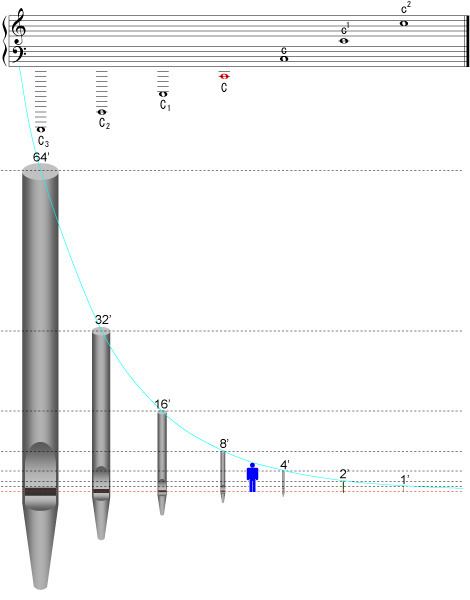 | ||
The subject of this article is technical in nature and requires an understanding of organ terminology. This is in the process of being rectified. Many of the terms used here are defined in the pipe organ article.
Scaling is the ratio of an organ pipe's diameter to its length. The scaling of a pipe is a major influence on its timbre. Reed pipes are scaled according to different formulas than for flue pipes. In general, the larger the diameter of a given pipe at a given pitch, the fuller and more fundamental the sound becomes.
The system most commonly used to fully document and describe scaling was devised by Johann Gottlob Töpfer. In this system, the diameter of a given note is compared with a reference scale by means of half-tone deviations larger or smaller (indicated by the abbreviation ht). This reference scale is called Normalmensur. Normalmensur is a rank of pipes based on an internal diameter of 155.5mm at 8′ C (the lowest note of the modern organ compass) and a mouth width which is one-quarter of the circumference of such a pipe. The scale provides for a reduction in diameter of the pipes by half at every succeeding 17th pipe. This system can be used to produce Normalmensur variation tables or line graphs for the analysis of existing ranks or the design of new ranks.
The following is a list of representative 8′ stops in order of increasing diameter (and, therefore, of increasingly fundamental tone) at middle C with respect to Normalmensur, which is listed in the middle. Deviations from Normalmensur are provided after the pipe measurement in brackets.
Normalmensur scaling table, 17th halving ratio:
From Organ Supply Industries catalog
